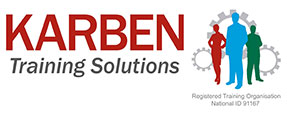FIRST AID ESSENTIALS
SEIZURE & EPILEPSY
Seizures are signs of abnormal brain activity. Up to 10% of the population is likely to experience a seizure at some time in their life. A seizure may occur when the normal pattern of electrical activity of the brain is disrupted. This can cause changes in sensation, awareness and behaviour, or sometimes convulsions, muscle spasms or loss of consciousness.
Not all seizures are considered epilepsy.
There are 2 types of seizures:
- Absent seizures: not convulsive. Group at high-risk 1-7 year old’s
- Febrile seizures: Where the core body temperature of a child rises too quickly for their brain to cope, resulting in convulsion. It has more to do with the rate of temperature change than the temperature reached. Children who experience these are not at an increased risk of epilepsy.
For both types, if the fit lasts longer than 5 mins, it is too long and considered a medical emergency. Seizures vary greatly and most are over in less than 5 minutes.
A seizure may be associated with hypoxia, onset cardiac arrest, medical conditions affecting the brain such as: low blood sugar, low blood pressure, head injury, neurological diseases and epilepsy. Trauma to the head, some poisons and drugs, withdrawal from alcohol and other substances of dependence, fever in children under 6 years old.
Signs and symptoms
Seizures may affect all or part of the body. Seizure activity may take many forms, and symptoms may include:
- Sudden spasm of muscles producing rigidity. If standing the victim will fall down;
- Jerking movements of the head, arms and legs;
- Shallow breathing or breathing may stop temporarily;
- Dribbling from the mouth; the tongue may be bitten leading to bleeding;
- Incontinence of urine and/or faeces;
- Changes in conscious state from being fully alert to confused, drowsy, or loss of consciousness;
- Changes in behaviour where the victim may make repetitive actions like fiddling with their clothes.
Generalised seizures usually involve the entire body and cause a loss or marked alteration in consciousness. Some generalized seizures result in life-threatening problems with airway or breathing, or risk of trauma from muscle spasms or loss of normal control of posture and movement. During partial seizures, usually only part of the body is affected and the person retains consciousness but may be frightened or confused.
Febrile convulsions are associated with fever and usually resolve without treatment. They occur in approximately 3% of children at some stage between the age of six months and six years. Children who suffer from a febrile convulsion are not at increased risk of epilepsy as a result of experiencing febrile convulsions.
Management
If the victim is unconscious and actively seizing, the rescuer should:
- Follow the victim’s seizure management plan, if there is one in place;
- Manage the victim according to (ANZCOR Guideline 3);
- Call an ambulance.
If the victim is unresponsive and not breathing normally, follow the Basic Life Support Flowchart (ANZCOR Guideline 8).
- Remove the victim from danger or remove any harmful objects which might cause secondary injury to the victim;
- Note the time the seizure starts;
- Protect the head;
- Avoid restraining the victim during the seizure unless this is essential to avoid injury;
- Lay the victim down and turn the victim on the side when practical;
- Maintain an airway;
- Reassure the victim who may be dazed, confused or drowsy;
- Call an ambulance;
- Frequently reassess the victim.
DO NOT put a child in a bath (to lower their temperature) during a convulsion as this is dangerous.
DO NOT force the victim’s mouth open nor attempt to insert any object into the mouth.
A seizure in water is a life-threatening situation. If the seizure occurs in water:
- Support the victim in the water with the head tilted so the face is out of the water;
- Remove the victim from the water as soon it is safe to do so;
- Call an ambulance;
- If the victim is unresponsive and not breathing normally, follow the Basic Life Support Flowchart (ANZCOR Guideline 8).
